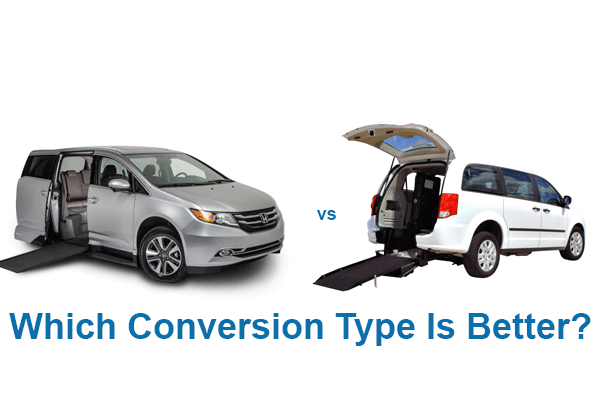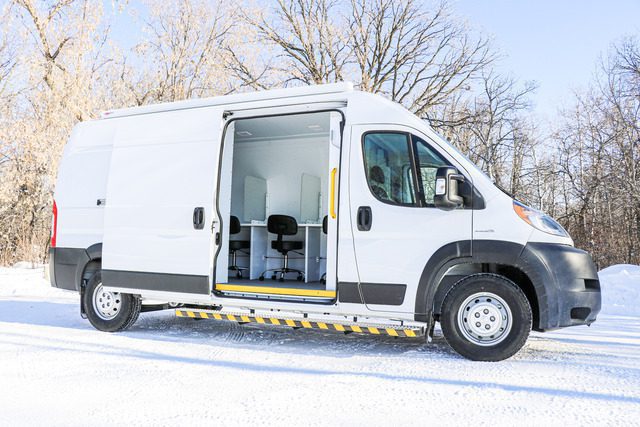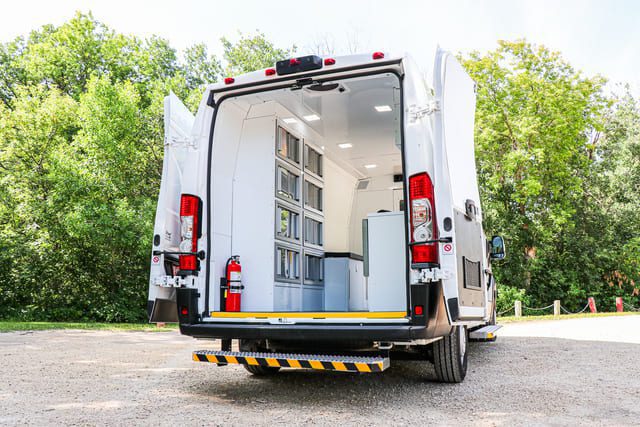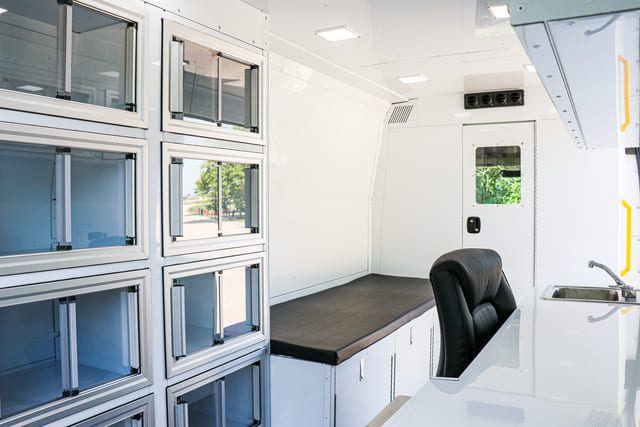 Pros and Cons of Rear and Side Entry Wheelchair Vans
Pros and Cons of Rear and Side Entry Wheelchair Vans
When it comes to purchasing a wheelchair van, there are several models and conversion styles to choose from. Rear entry wheelchair vans and side entry vans each have their own advantages and disadvantages. As the end user of the vehicle, it is important to know the differences between the types of conversions available and which conversion works best in your situation.
I have compiled a list of pros and cons for each conversion type to help make the decision process easier for you. If you are ready to choose your wheelchair van in Winnipeg, talk to us today. Click here to check out our wheelchair van options.
Rear Entry – Pros
1. Easy Entry & Exit
Rear entry wheelchair vans offer easy entry and exit with the manual bi-fold ramp. The advantage to you with this type of conversion option is it allows you to park your vehicle anywhere. From time to time, the handicap spots are full and having an option to park anywhere is nice. As well, not all garages are double garages which are typically needed with a side entry option.
2. More cost effective
The modifications made to a rear entry wheelchair van is minimal in comparison to the work done in a side entry. The more intense the work done to a vehicle body, the more costly it becomes. Rear entry vans have the frame welded in place to the existing frame. Whereas on a side entry, there are a lot of modifications done to the wheelchair van. The body is also lowered which in snowy climates, the side entry can act like a snow plow. Rear entry vans maintain the same level of clearance as the factory height. As well, some of the side entry manufacturers operate out of the United States, the exchange rate plays a factor in increasing cost of the wheelchair van.
3. Several Position & Seating Options
The rear entry conversion provides multiple seating and position options for wheelchairs. In rear entry wheelchair vans built by MoveMobility, you have the option of flip and fold seats, stationary bucket seats, wheelchair positions in the mid and rear of the van. As well, a 3rd row, flip and fold seat is also available to increase seating capacity in the van.
4. Ability to Drive
Lastly, it is possible to drive a rear entry minivan. There is a seat available that allows for the driver seat to slide back and for the person in the wheelchair to position themselves on the seat.
Side Entry – Pros
1. Automatic & Manual Ramp Options Available
The Vantage Mobility side entry vans provide both manual and power options for their ramps. Usually, the person in the wheelchair determines the type of ramp option needed. The power option is available on all three major models (Dodge, Toyota, and Honda) and the manual option is only available on the Toyota and Dodge.
2. Multiple seating configurations
The side entry van offers seating for up to six including wheelchairs. For example, the wheelchair van can hold a wheelchair in the mid row and one in front passenger seat area. The factory back bench is available and can hold up to three.
3. Multiple van model options
As mentioned above, the side entry conversion is available on the Dodge, Toyota and Honda. I have written reviews on all three of these vehicles. You can learn more about each conversion and van by clicking on the brand.
4. Passenger Seat Positioning
One of the major positives with the side entry conversion is the ability to have the person in the wheelchair to sit in the front passenger seat area. Rear entry wheelchair vans cannot offer this given how the modification is done. For some, this is very important.
5. Potentially accommodate large chairs
The size of the wheelchair is a factor that needs to be considered when choosing a conversion. Side entry vans can do a better job at handling large chairs. However, in most cases, rear entry wheelchair vans work. It might just mean the person sits near the back of the wheelchair accessible van instead of mid row.
Rear Entry – Cons
1. No power option
The rear entry conversion doesn’t have a power option available which means the ramp needs to be closed by someone else. In most situations, this is not an issue unless the person is in a wheelchair and driving by themselves.
2. No front passenger position
Rear entry wheelchair vans have the middle of the van cut out to accommodate the wheelchair pan. The cut that happens goes up to the driver and passenger seat and sits lower than the factory floor. Given this change in height, it is impossible for the person in the wheelchair to be secured in the front passenger position.
3. Limited on wheelchair size
In some situations, rear entry vans cannot have large wheelchairs positioned in the mid row. Between the two captains seats, there is only about 23″ of clearance. In these situations a second wheelchair position can be installed allowing the person in the wheelchair to be sitting further back.
Side Entry – Cons
1. Major modification done to vehicle frame and body
When side entry vans are modified, there is a lot of deconstruction of the factory body and frame. This type of work is extremely costly in comparison to a rear entry conversion. To see how a side entry conversion is done, click on the van below.
2. High back bench
Passenger comfort is important, especially when it comes to longer road trips. The side entry conversion has the back bench positioned higher than factory seating due to the lowered floor. To compensate, a foot bar is available to give passengers a place to rest their feet.
3. Increased cabin noise
When a side entry van is modified, the factory floor is removed from the van and replaced with a new lowered floor. This is necessary for the ramp to get the clearance it needs. However, with this type of modification, the road noise increases making for a louder ride. In comparison, rear entry vans are quieter as most of the factory floor is left in after the conversion.
4. Limited accessibility
Side entry vans are limited to where they can be parked. Typically, they need to be parked in handicap spaces to have the extra room to enter or exit the vehicle. In a residential setting, a double garage makes it easier to go in and out, especially in the colder weather. Lastly, it is important if unloading the wheelchair onto the curb that the ramp can clear the curb. In the winter time, this can be a challenge given the prevalence of snowbanks.
Conclusion
There are lots of factors to consider when choosing the right type of wheelchair van conversion. Hopefully, this list of pros and cons for each conversion type has been helpful.
Are you thinking about a wheelchair van? Fill in the form below to learn more.
[gravityform id=”1″ title=”true” description=”true”]







